
Bank Swallow
Identification
This species is Manitoba’s smallest swallow, between the size of a sparrow and a robin. The bank swallow has grey to brown upperparts (back and back of head) and a more lightly coloured breast with an obvious dark band. In flight, the bank swallow is observed to have an erratic flight pattern. The bank swallow may be misidentified for another SAR, the chimney swift, but has broader, short wings and lacks the stubby tail. The two SAR also have different nesting preferences to which the names of each species is attributed.
Habitat
Bank swallows are often found near water sources such as rivers, marshes or ponds, where they nest in cavities in the banks. As an aerial insectivore the bank swallow needs to be situated by grassland, pastures or wetlands which provide insect prey to feed on. If the insect population is not high enough or the water source is unhealthy, nest failure may occur for the bank swallow.
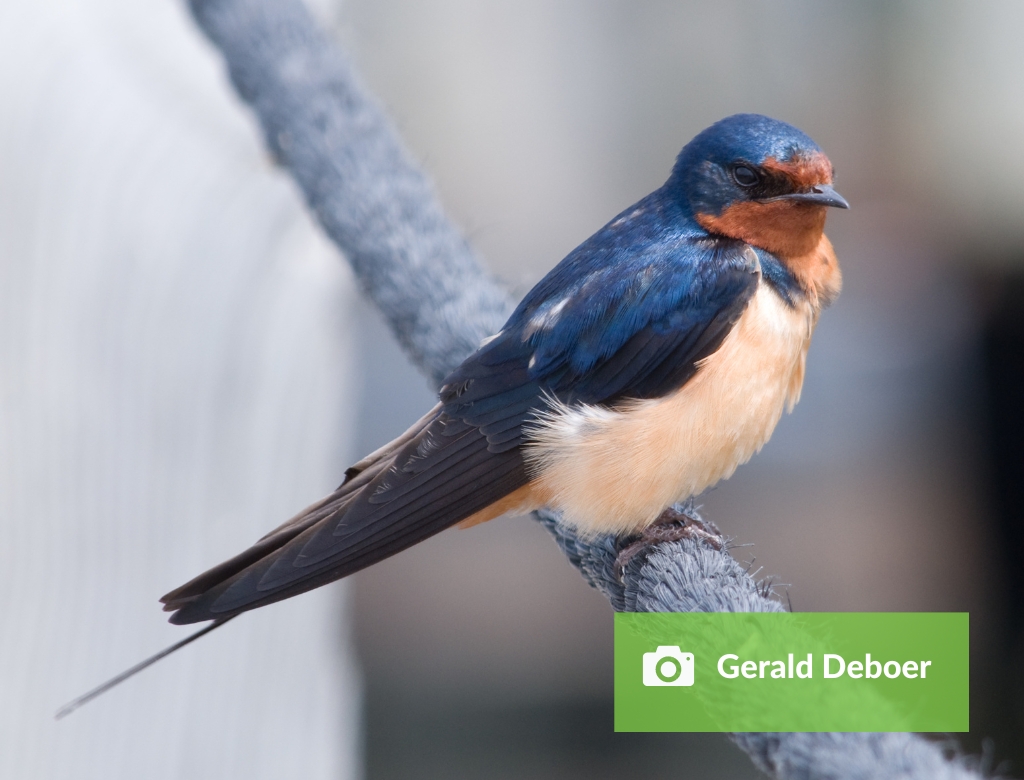
Barn Swallow
Identification
The barn swallow is distinguished by its distinct deeply forked tail, which shows white markings in flight. They are larger in size than a sparrow with very little neck showing in flight. Colour patterns are metallic blue upperparts with light to rust coloured underparts rising to a darker red throat patch stretching onto the forehead.
Habitat
Barn swallows prefer to live in grasslands, wetlands and agricultural lands that sustain an abundance of insect prey for this aerial insectivore. They have adapted to the changing prairie landscapes by switching from nesting in caves, crevices and hollows to nesting in man-made\ structures such as under eaves of buildings, especially favoring older agricultural buildings.

Bobolink
Identification
The bobolink is smaller than a robin, with a short tail and neck. Non-breeders and females have a mottled buffy-brown plumage similar to most sparrows and a pink bill. In breeding plumage, the male is dramatically different in colour. Breeding males are mostly black with a white back and rump, while the back of the head is a distinctive buffy, yellow colour and their bill is black. The males can often be seen singing in flight, or while perched on tall tufts of grass and fence posts.
Habitat
Bobolink are found wherever tall-grass prairie remains, plus other meadows and hayfields. As more native prairie is lost, they will nest in cropland and their well hidden, ground-based nests can be inadvertently damaged during harvest. Bobolink feed on a variety of insects, including those that may be harmful to crops, so they can benefit agricultural areas.
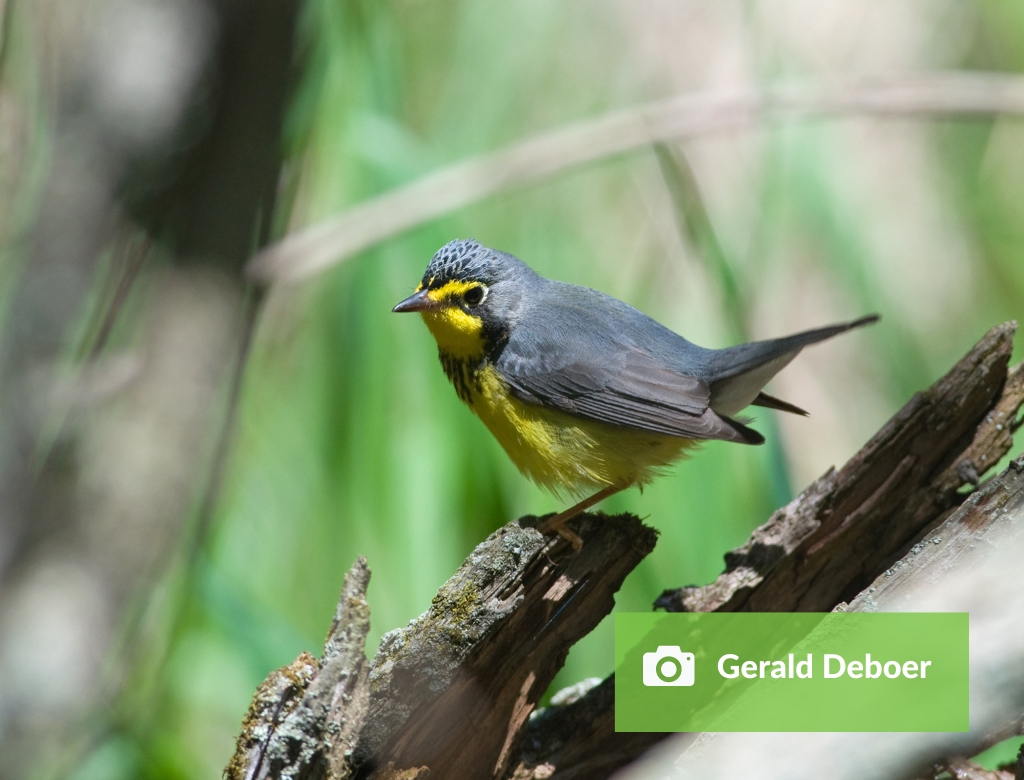
Canada Warbler
Identification
When identifying the Canada warbler from other warbler species across Manitoba there are some key features to consider. The first is a speckled black necklace across the yellow breast which appears most obviously on breeding males but is still seen on non breeders and females. Its back is slate grey and its front, from face to belly is yellow. The Canada warbler has a rounded breast, longer tail and a pronounced light-coloured eye ring.
Habitat
The Canada warbler prefers mixed woodlands with a dense understory. Nesting occurs on or near the ground in moist areas that are plentiful with insect prey. The Canada warbler is threatened as nearly 90% of their overwintering habitat in South America has been lost due to deforestation.
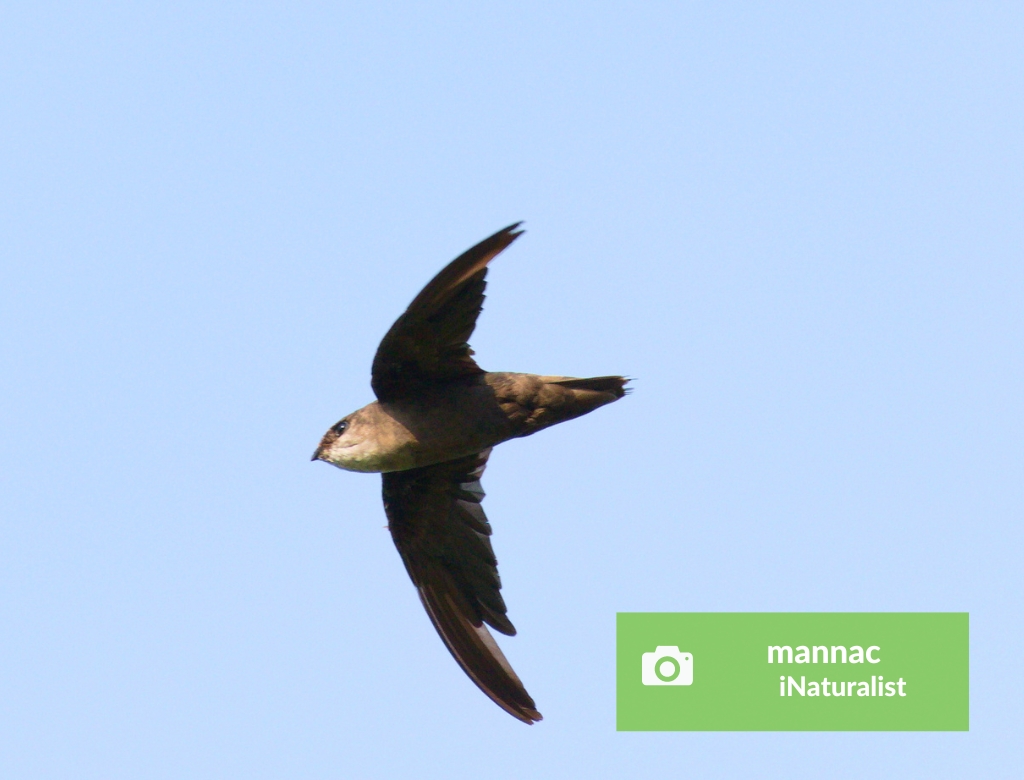
Chimney Swift
Identification
The chimney swift is regularly misidentified as a swallow. Look for the sooty-grey, cigarshaped body with long curved wings and short stubby tail. Note a lighter colored throat patch. Chimney swift have a distinct jittery flight pattern and chittering call while foraging.
Habitat
Chimney swifts are now more numerous in urban or developed areas. Traditional nesting sites of old growth, hollow trees have mostly been lost to deforestation. Most birds now nest in chimneys, although with the modernization of these structures the chimney swift faces new challenges. Another important need is a healthy insect population.

Common Nighthawk
Identification
The common nighthawk is a medium sized bird that is well camouflaged due to its grey and brown mottled plumage. It may be mistaken for other members of the nightjar family including another SAR, eastern whip-poor-will. Most nightjars are nocturnal whereas common nighthawks are crepuscular (most active at dawn and dusk). Other features to look out for are the white bars on the wings, forked tail and the distinct “peent” call.
Habitat
Common nighthawks prefer open areas near mixed woodlands but can adapt to urban habitats. They will hunt around artificial light when available. As an insectivore, healthy insect populations are critical.

Eastern Whip-poor-will
Identification
The eastern whip-poor-will is a nocturnal bird named for its unmistakable call, “whip-poor-will”. Like all members of the nightjar family, their mottled grey and brown plumage is adapted for camouflage. They are medium in size with a flat head and short beak that is surrounded by bristles that aid in capturing prey.
Habitat
The eastern whip-poor-will depends on sparsely wooded areas and prairie to forage in, and more shaded, mixed woodland areas to nest in. In general, they do well in areas that are semi-open or patchy with clearings created by disturbance events such as fire. An abundant insect population is critical for a healthy eastern whip-poor-will population.

Eastern Wood-pewee
Identification
Eastern wood-pewees are named after its call, a slurred “pee-a-wee”. They are larger than a sparrow in size, with long wings and tail, and a noticeable peak on its head. Both sexes have dark grey upperparts with a light breast which occasionally has a light-yellow tone.
Habitat
Eastern wood-pewees can be found on the open edges of deciduous forests. Unfragmented forest is preferred, but in their overwintering area of South America this is not always possible due to deforestation. Eastern wood-pewees need abundant insect prey to survive but will also feed on vegetation such as berries.

Golden-winged Warbler
Identification
Compared to other Manitoba warblers, the golden-winged warbler has gold wing patches and a golden crown, the latter which is most distinguishable in males. Both sexes are grey in colour and have long tails, slender bodies and pointed bills. Males have a distinct black bib on their throat and a black eye patch, while the throat and eye patch of females appear lighter in colour.
Habitat
During the breeding and nesting season, golden-winged warblers are found in mixed-woodlands which are in the early stages of regeneration. After leaving the nest, young birds will move to unfragmented, mature forests. Important to note is that almost one-third of golden-winged warbler nests can be taken over by the brown-headed cowbird.
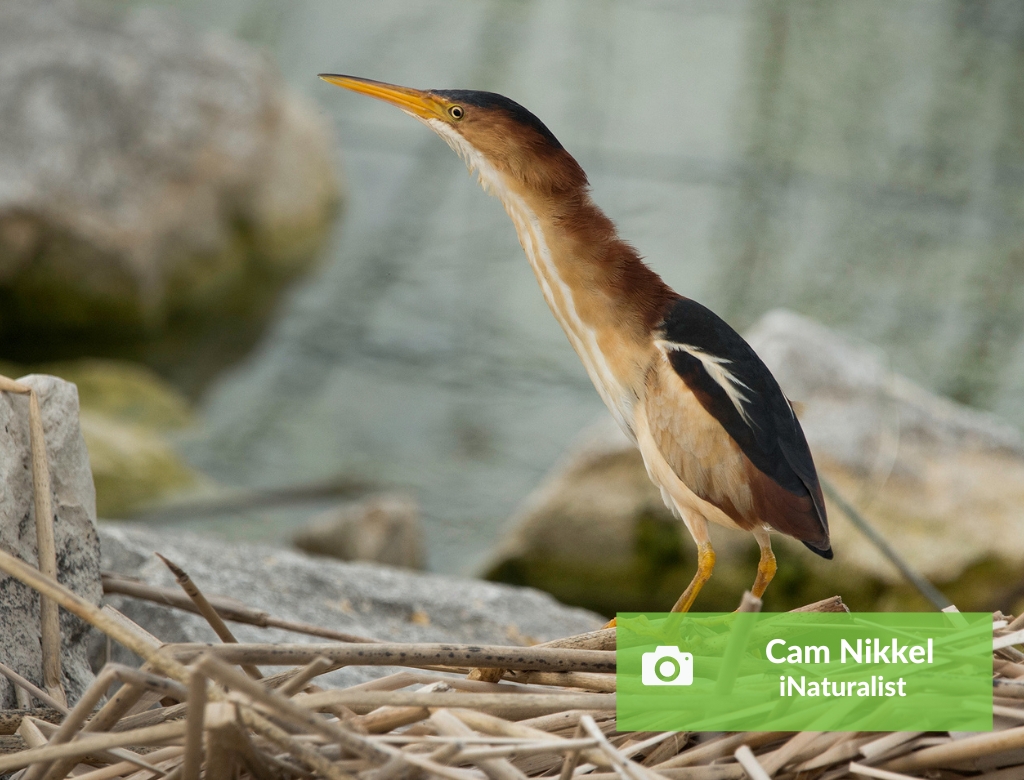
Least Bittern
Identification
The least bittern is a small heron with a wingspan of 45 cm and weighing only 80 grams. This species has a dark crown extending along its back, a warm brown tail and pale underparts with pale brown stripes. Breeding males appear darker on the upperparts. As with all herons, least bitterns have a hunched appearance, long legs and a long, pointed yellow beak.
Habitat
Least bittern are found in swamps, marshes and small bodies of water where aquatic food sources are plentiful and where dense vegetation grows. Look out for them on the edges where cattails meet open water. Due to being a shy, elusive bird, least bitterns do not do well when disturbed by the presence of humans, whether on water or land.
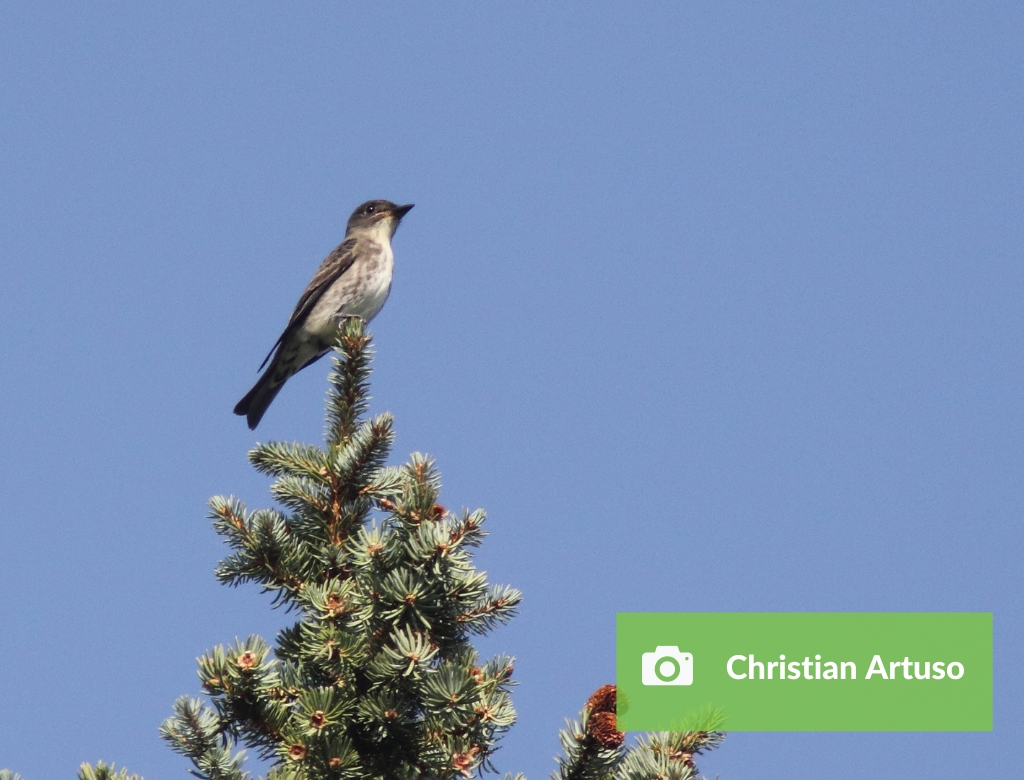
Olive-sided Flycatcher
Identification
The olive-sided flycatcher is a medium sized bird, dark grey in colour with olive-tinged wings, and a lighter breast. The bill is large and plumage on top of the head is raised. The easiest way to distinguish this species from other flycatchers (including another SAR, the eastern woodpewee) is by their distinct call which has been said to sound like “quick, three beers”.
Habitat
Olive-sided flycatchers are most often observed in the top of the canopy of conifer forests where they search for insect prey. When natural disturbances such as wildfires create a patchy network of woods and dead trees to perch on, olive-sided flycatcher numbers are at their highest.
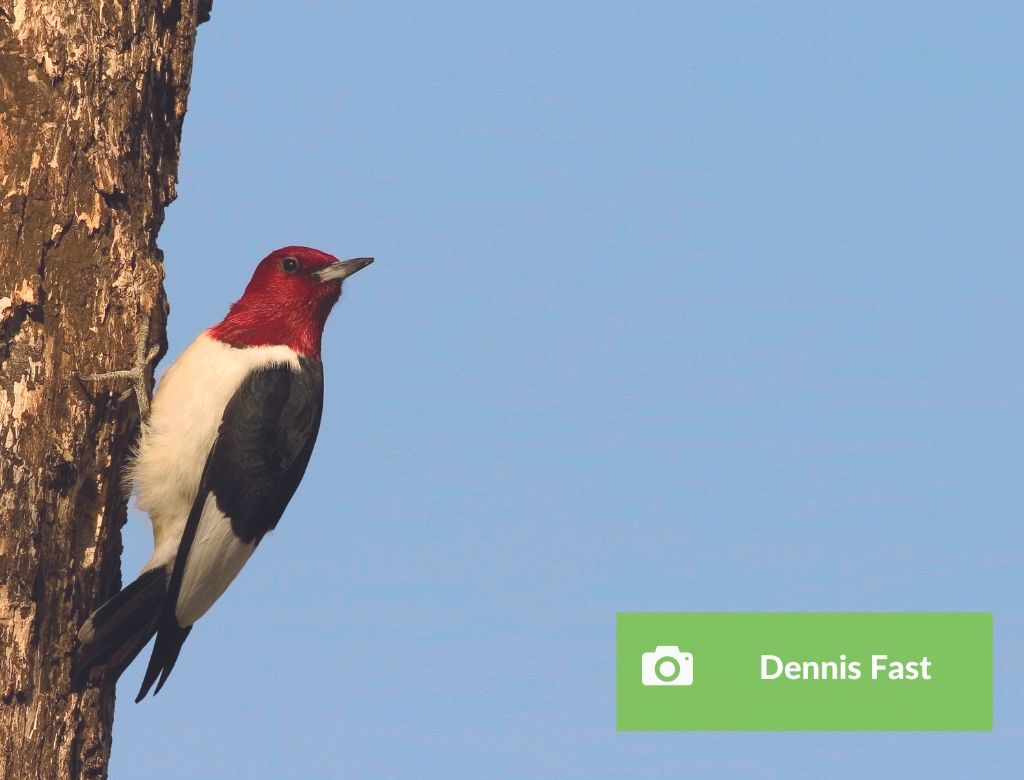
Red-headed Woodpecker
Identification
The red-headed woodpecker is medium in size with a long sturdy bill. Compared to other Manitoba woodpeckers, the entire head and throat of adult red-headed woodpeckers are red. This is sharply contrasted with its black back, white patched wings, and white breast. Unlike most birds, male and female red-headed woodpeckers are nearly identical in plumage. Juveniles are duller looking with a brown head.
Habitat
Red-headed woodpeckers prefer aspen stands but can be found in other habitats such as wooded grasslands, forest edges or shelter belts on agricultural land. Well-grazed woodlots are particularly favoured by red-headed woodpeckers in Manitoba. The need for old growth or dead standing trees is critical for breeding, nesting and food storage.
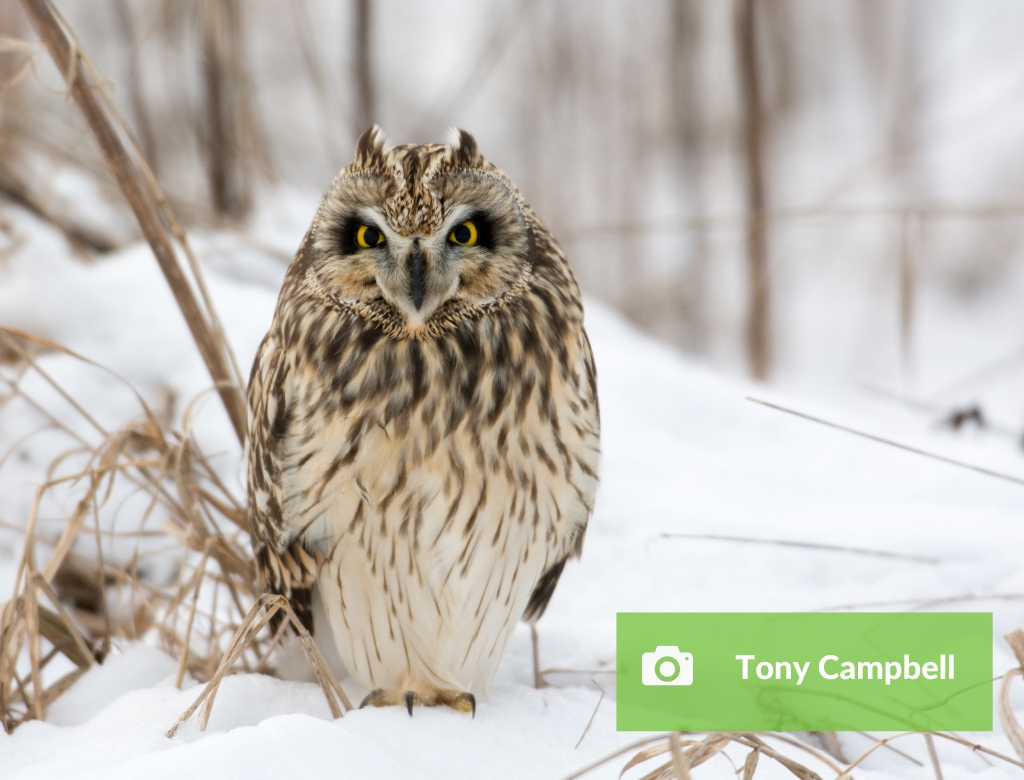
Short-eared Owl
Identification
The short-eared owl is comparable in size to an American crow. It has streaked brown, black and beige upper parts and a more lightly streaked breast. The eyes are yellow with a black eyepatch on a light-coloured, disc-shaped face. Ears are seldom visible. A better identifying feature is a slow, moth-like flight pattern, observed at dawn and dusk, that is typical of short-eared owls while searching for prey.
Habitat
Short-eared owls are found throughout most of Canada but prefer open prairie and the arctic tundra where human developments are limited. Nesting occurs on the ground amongst grasses and other low-growing plants. The abundance of prey, usually small mammals, is critical to the short-eared owl.

Yellow Rail
Identification
Yellow rail are very seldom seen, more often heard making a distinct “click-click” call which sounds as if two small stones are being tapped together. The yellow rail is comparable in size to a robin, with mottled, yellow and brown plumage. The underparts and face are lighter yellow and the stubby bill is a more noticeable yellow in breeding males. Yellow rail have a shape similar to that of a chicken with proportionately long legs and short head and neck.
Habitat
Yellow rail live in shallow wetland habitats such as wet grasslands and sedge meadows. Changes to hydrology, such as draining of wetlands or damming, have big impacts to yellow rail as they do not tolerate higher water levels. Short grasses or sedges are needed for nesting and camouflaging from potential predators.
